- Books Name
- Education Vision Political Science Book
- Publication
- PathSet Publications
- Course
- CBSE Class 12
- Subject
- Political Science
EMERGENCE OF TWO POWER BLOCS
Cuban Missile Crisis
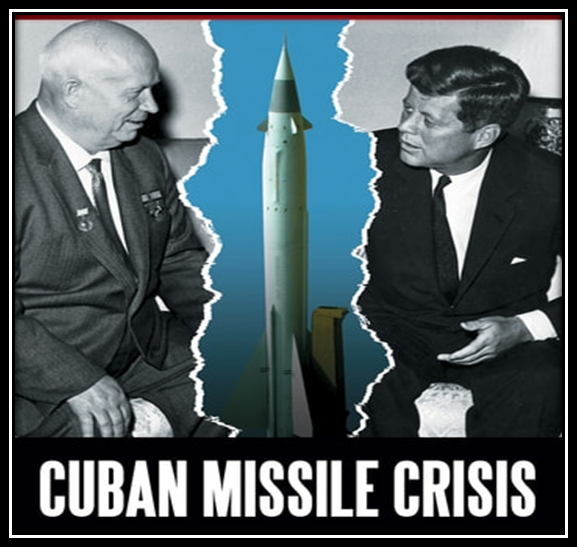
- Cuba was an island closer to US but it was ruled by USSR
- Cuba got all aids from USSR
- Cuba was a communist government ruled country
- In April 1961, USSR’s president worried that US might invade Cuba and throw off President Fidel Castro (president of Cuba).
- So, the president of USSR -- Nikita Khrushchev made Cuba Military base and placed nuclear missiles at the coast of Cuba.
- US became a bit afraid because the place where the missiles was placed by USSR, many states of US were near to it and US could not afford to lose them.
- After 3 weeks US became aware of the missiles placed my USSR.
- President of US – John F. Kennedy.
- US And USSR were having many nuclear weapons with intensity of 10 – 1500, which could destroy the whole world.
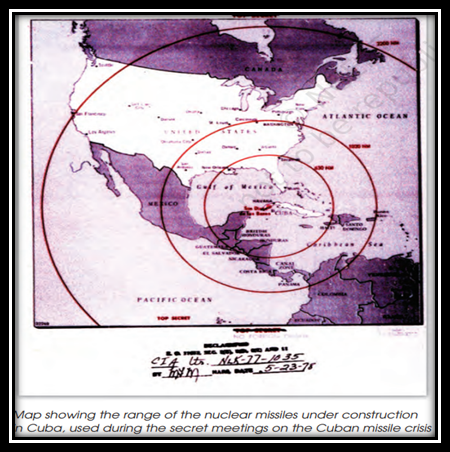
- US warned USSR, that If they say any missile approaching towards them, they will have to start the war.
- After the US made the statement USSR backed off and removed the missiles.
- And this war between US and USSR came to be known as CUBA MISSILE CRISIS because it created tension in the whole world.
- Cuba missile war was higher starting point of starting cold war.
The Cold War Rivalry
Reasons for Cold War between US and USSR
- Most important reason was their difference IDEOLOGIES as US favoured liberal,democracy and capitalism and USSR favoured socialism and communism.
- US wanted a multiparty or two-party dominance; USSR wanted one party dominance.
- Communism- Labours work for collective good, i.e., for govt and state.
- Capitalism- Refers to as individual gain, i.e., private gain.
- Alliance- a relationship based on similar interests.
COLD WAR
- It started after the end of World War II (1945).
- After the WW II ended US dropped 2 nuclear bombs to
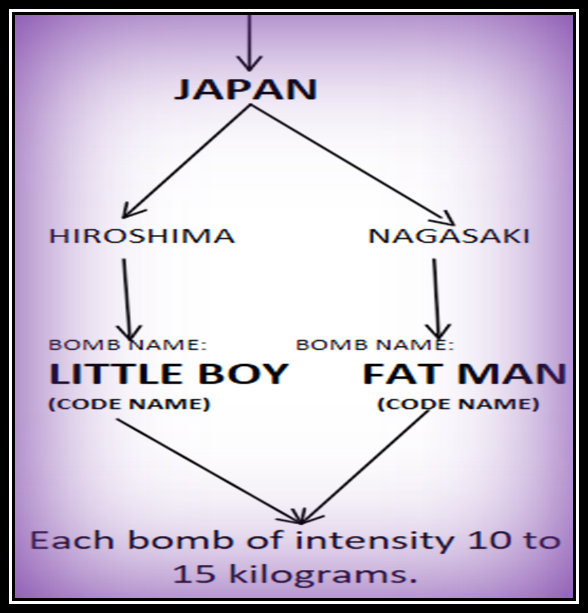
- And Japan surrendered.
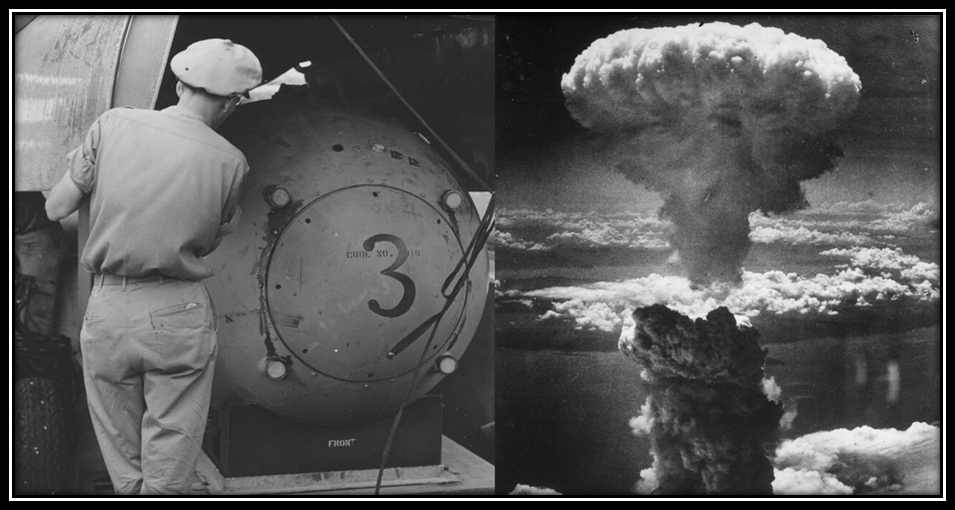
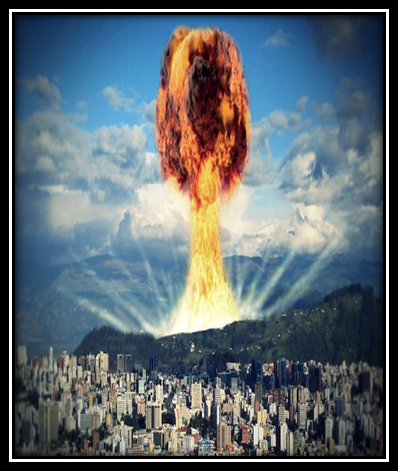
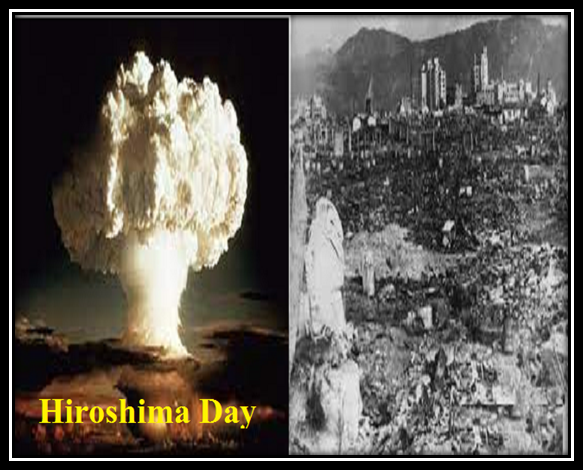
LOGIC OF DETERRENCE:
Means if both countries fought together then It will be difficult to announce winner because both have extreme nuclear power and both can destroy each other.
---- No one will be winner
---- NO political gain
--- No economic gain
And that is why both the countries decided to adopt LOGIC OF DETERRENCE.
Military feature of Cold War:
If two countries have logic of deterrence the then they avoid war so countries have to stay rational and responsible, i.e., that is maintaining good relations and taking care of nuclear weapo
Emergence of Two Power Blocs
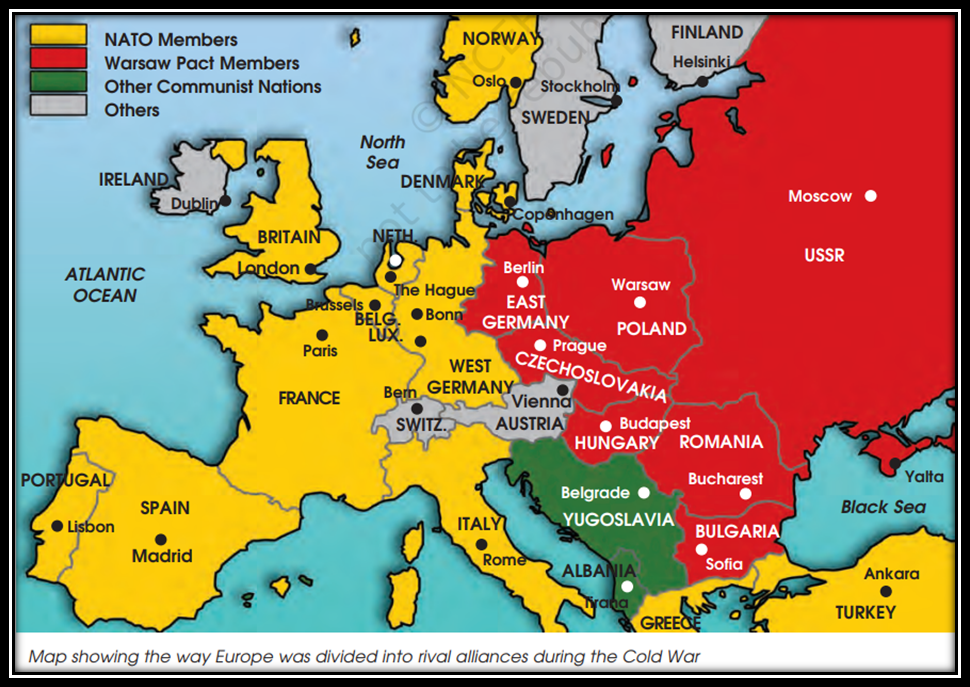
- The two superpowers i.e., the US and USSR wanted to expand their influence on the rest of the world.
- While expanding to the other states USSR and US promised of protection, weapons and economic aid against the state’s local rivals, mostly regional neighbours.
- The first division took place in Europe. Most countries of Western Europe sided with the US and were known as 'Western alliance’.
- The Western alliance formed itself into an organisation known as North Atlantic Treaty Organisation (NATO). It came into existence in April, 1949 with twelve states namely Belgium, Canada, Denmark, France, Iceland, Italy, Luxemburg, Netherlands, Norway, Portugal, US and UK.
- The NATO declared that armed attack on any one of them in Europe or North America would be regarded as an attack on all of them.
- In East and South East Asia and in West Asia (Middle East), the United States built an alliance system called the South-East Asian Treaty Organisation (SEATO) and the Central Treaty Organisation (CENTO).
- The countries of the Eastern Europe joined the USSR and came to be known as ‘Eastern Alliance’
- The Eastern alliance, also known as the Warsaw Pact, was led by the USSR was established in 1955. Its principle function was to counter NATO's forces in Europe.
- Communist China quarrelled with the USSR towards the late 1950s and in 1969 they fought a brief war over a territorial dispute.
- The other important development was the Non-Aligned Movement (NAM), which gave newly independent countries a way of staying out of the alliances.
- The smaller countries were of more help to the superpowers because they were the means to gain vital resources such as oil and minerals; locations to spy each other and to launch weapons.
Arenas of The Cold War
- US and USSR were having cold war but they did not have war in their territory they used do wars in Alliance states.
- Arenas: Area where wars occurred or threated to occur between alliances system but did not cross limits ad there was no nuclear war.
- Cold war was also responsible for many shooting wars such as:
- Korean War (1950 – 1953) – Jawahar Lal Nehru, the key leader of NAM helped negotiate/end war between the two Korea’s.
- Afghanistan War (1979 – 1989)
- Vietnam War (1954-1975)
- Cuban Missile Crisis
- Berlin (1948-1949)
- Congo War (early 1960’s) – UN Secretary-General mediated/stopped the war.
- US and USSR always had fear of war so they used to stay ready by: -
- Stocking arms and ammunitions in huge quantity
- Collecting nuclear weapons
- Military setup
- USSR thought what if someone tries to start a war intentionally/ some soldiers fires a missile intentionally to start a war.
- Therefore, they decided to collaborate in eliminating/limiting certain nuclear weapons and “Arms Control” was introduced.
- They signed 3 treaties/ agreement –
- Limiter Test Ban Treaty (LTBT) -1963
- Nuclear Non- Proliferation Treaty (NPT)- 1968
- The Anti- Ballistic Missile Treaty
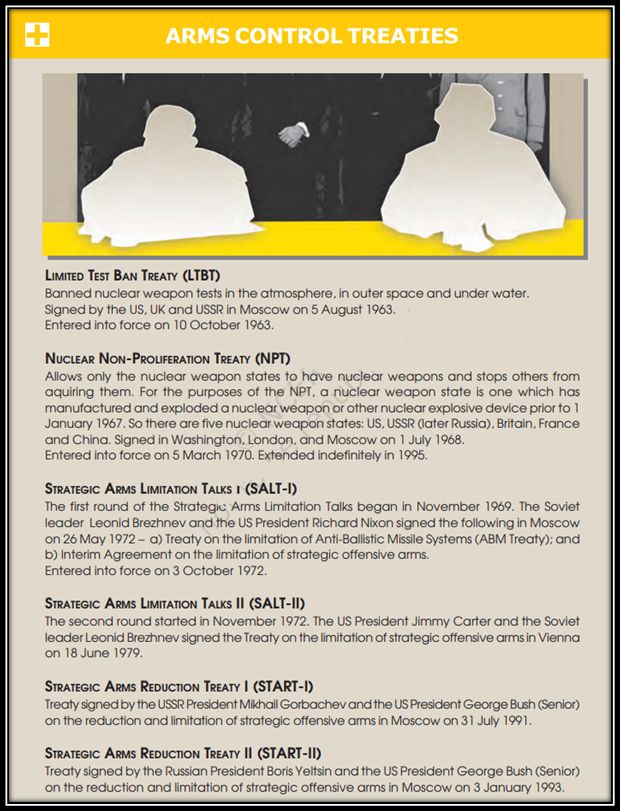

 PathSet Publications
PathSet Publications
